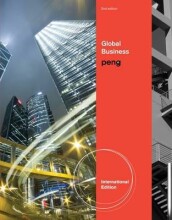Summary: Microeconomics | 9780273754602 | Jeffrey M Perloff
- This + 400k other summaries
- A unique study and practice tool
- Never study anything twice again
- Get the grades you hope for
- 100% sure, 100% understanding
Read the summary and the most important questions on Microeconomics | 9780273754602 | Jeffrey M. Perloff.
-
3 Elasticity & sale taxes
-
Name and explain the two types of taxes.
- Ad Valorem (sales) tax: For every dollar spend by the consumer, the government keeps a fraction (ad valorem tax rate)
- Unit tax (specific tax): A specified dollar amount is collected per unit of output.
-
4 Consumer behaviour
This is a preview. There are 1 more flashcards available for chapter 4
Show more cards here -
What are indifference curves and name their properties.
The set of all bundles a consumer views as equally desirable.properties:- Bundles on indifference curves closer to te origin are less desirable then further away
- through every possible bundle their is an indifference curve
- They cannot cross
- they slope dwonwards
-
What are the two extreme cases where te indifference curves is not convex?
- When the goods are perfect substitutes: The consumer is completely indifferent as to which to consume. This makes the slope -1, so a straight line.
- When goods are perfect complements: The consumer is only interested in consuming in fixed proportions. Only will consume good 1 when having it together with good 2. This results in indifference curves with right angles.
-
What is an optimal bundle?
The optimal bundle is a bundle with the condition mrs=mrt. So it lies on the point where an indifference curve touches the budget constraint only at one point. This is the consumer optimum and when this bundle is consumed the consumer has no incentive to change one good for another. -
5 applications of consumer theory
-
What are the three ways of looking at the relationship between income and quantity demanded?
- With the touching of indifference curves and budget constraints. Through all bundles that arise here, an income-consumption curve can be formed.
- With the demand curves that will derive from the one above showing the relation ship between price and the demand.
- Engel curve: shows the relationship between the quantity demanded of a single good and income holding prices constant.
-
Explain the difference between a normal and an inferior good, also explain a given good.
A normal good ia a good for which the demand increases when income rises (ξ≥ 0) , an inferior good is aan good for which you buy less when income rises (ξ<0).A good can be normal at one price level and inferior at another.A given good is a good is an good of which the Quantity demanded lowers when the price also lowers.
-
6 production functions
This is a preview. There are 4 more flashcards available for chapter 6
Show more cards here -
What are the three legal forms of for-profit firms, and explain?
- Sole proprietorship: owned by a single individual, who is personally liable for the debts of the firm with his personal wealth.
- Partnerships: A jointly owned by 2 orme more people business, operating under a partnership agreement. The assets of partners that might not be responsible for failure, will be held liable.
- Corporations: Firms owned by share holders through stocks. Those share holders elect a board of directors that will run the firm. Those will hire managers. Personal assets of owners cannot be taken to pay corporation's bankruptcy.
- Sole proprietorship: owned by a single individual, who is personally liable for the debts of the firm with his personal wealth.
-
Explain shortrun & longrun in terms of factors of production.
The short run is a planning period which has at least one fixed input, which is a production factor that cannot be varied practically during the relevant time period.Production factors broadly are Kaptal, Labour and Materials.In the long run all production factors can be varied and so only has variable inputs. Also in the long run Labour and Kapital can be substituted. -
What are isoquants and name their characteristics.
It is an curve that shows the efficient combinations of capital and labor that can produce a single level of output. It shows the flexibility a firm has producing a single level of output.- the farther an isoquant is from origin, the greater the level of output.
- iso quants don't cross
- Isoquants are downward sloping
-
Name the extreme conditions which express i the shape of the isoquant.
- When inputs are perfects substitutes all isoquants are straight lined.
- When inputs can not be substituted at all the isoquants have right angles
- Higher grades + faster learning
- Never study anything twice
- 100% sure, 100% understanding































